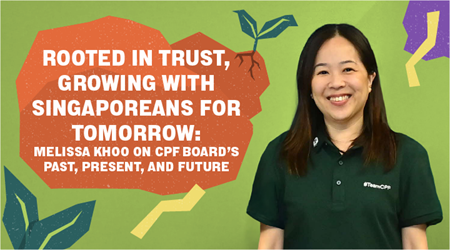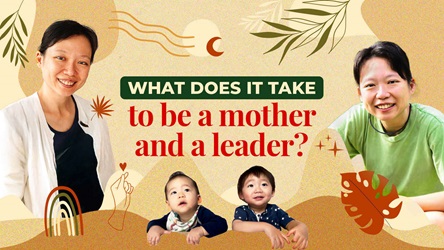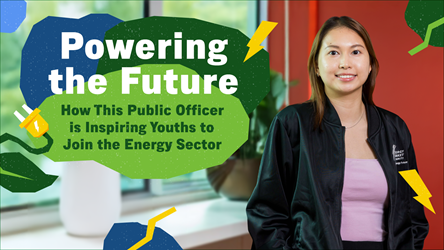“What Are The Things We Hate Doing Most? Can We Get Rid Of It?”
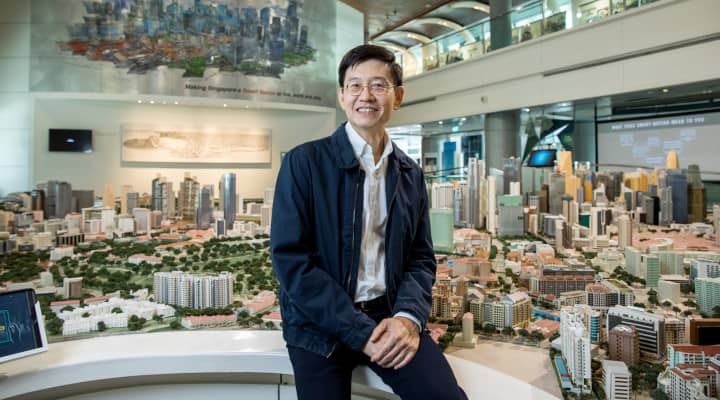
While many discovered the joys of cycling during the pandemic, Mr Lim Eng Hwee was an avid cyclist who had to stop cycling as much.
“I used to cycle to work. But as we were all working from home, there was no reason to come in,” said Mr Lim, Chief Executive Officer of the Urban Redevelopment Authority. He used to make a 40-minute ride from his home in the east to his office at Maxwell Road.
Nevertheless, working from home does have its perks.
After a virtual meeting from home and just before this interview, which took place at The URA Centre on February 14, Mr Lim managed to fit in a lunch with his wife at a restaurant in a mall near his home. “It’s a Valentine’s Day lunch,” quipped Mr Lim, who has one daughter.
Singapore in 10 Years
However, apart from getting used to work from home and collaborating remotely via digital tools, the URA also had its hands full during the pandemic, like many other government agencies.
Over the past two years, the URA has been roped in to deal with emergency situations, like re-adapting buildings into safe accommodation for foreign workers to minimise the spread of COVID-19 and helping to enforce safe distancing measures.
They have also had to think about longer-term land use plans – how would these be affected by the pandemic?
What is certain for now, said Mr Lim, is that for the next 10-20 years, workplaces will be located nearer to where people live. Companies may have satellite offices scattered island-wide. More amenities will be provided, so that people can live, work and play close to where they live.
Building a City in Nature is a priority. The plan is to build 1,000 hectares of green space in the next 10-15 years and expand recreational routes and park connectors.
In URA’s ongoing public engagement exercise for the Long-Term Plan Review, which has involved about 15,000 Singaporeans to date, one of the top wishes that emerged is the desire to see more greenery.
“As we held this exercise amid the pandemic, many of us started to realise how important greenery and fresh air are to our wellbeing,” he said.
Mr Lim himself shares that when he used to live in Bukit Panjang, one of his most precious memories was cycling 22km from his home to the URA building using the Rail Corridor. At the time, the path was relatively unknown. “You would see no more than 10 living beings along your entire journey, including humans and dogs. But the ride was very special, you can almost meditate.”
Sustainable and Inclusive City
Video by: Eric LinAnother major theme that emerged from the public engagement exercise was resilience.
He said: “People were concerned with how we can deal with the shocks we may face in the future. It could be another pandemic, a financial crisis, or the threat of climate change. How can we build in the necessary policies, initiatives, and infrastructure to deal with future uncertainty?”
Land use plans are shaped by the nation’s evolving needs. For example, as young people prefer to live on their own instead of with their parents, this might lead to an increased demand for housing. Right now, the pandemic has altered the way people work and travel.
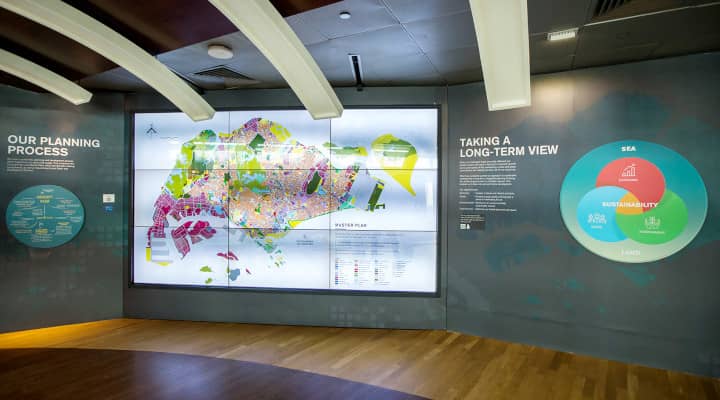
Building in Flexibility
One way to ensure adaptable plans is to build in flexibility from the onset. Mr Lim, who has been with the URA since 1990 and has seen how change has accelerated over the decades, said: “We must find ways to keep our plans, our policies and our land use very flexible and adaptable. If things change, we would have room to change.”
For instance, one of the biggest game-changers at the moment is working from home. But Mr Lim said that the extent to which businesses will continue to do so post-pandemic and its long-term impact on transport infrastructure and space planning are still unclear.
Nevertheless, one way in which the URA plans flexibly is to allow for the easy adaptation of office space. With schemes like the Strategic Development Incentive, owners of older buildings of at least 20 years old can collaborate with neighbouring property owners to create mixed-use sites that could include a hotel, a residence and some amenities, in addition to offices.
A Progressive Culture
Similarly, the URA itself has a progressive culture that enables flexibility.
In its work, which involves collaboration with many other government agencies, the URA has developed a geospatial urban planning and analytics platform called ePlanner. With this system, planners across relevant agencies can easily access and analyse various land use planning information, helping to facilitate integrated and well-coordinated planning
This is only possible because the URA embraced digitalisation at an early stage, as far back as the early ’90s when it enabled the electronic submission of development plans for approval rather than requiring the physical submission of hard copies.
Just before the pandemic hit, the URA had already digitised all its records, from archival documents to microfiche. “Thus, we could switch to working remotely almost overnight without any major hiccups,” he said.
The URA also quickly came up with a Space Out web application, working with many different venue operators to provide real-time information on crowd levels in malls, supermarkets, markets, stadiums and other venues.
This helped Singaporeans to make better-informed decisions, especially during the COVID-19 circuit breaker, when going out for grocery shopping or recreational activities.
“Our journey toward digitalisation and capability building in data analytics is driven by needs. It is based on our experiences in interacting with people, walking the ground, and solving problems,” he said.
Mr Lim said: “A question often asked of URA staff, at our annual workplace seminars or other forums, is ‘What are the things we hate doing most?’ Can we get rid of it? Can a machine do it for us?”
To overcome such pain points at work, staff learning and experimentation are highly valued at the URA.
One example involves a URA employee who had no prior IT knowledge and formal training. After attending an in-house analytics course, he put together a program that overlays maps digitally and highlights zoning irregularities. In the past, staff had to painstakingly place the hard copy maps on light tables to manually spot and trace out the irregularities.
Mr Lim added: “When we give directives, they are usually given in a broad direction to give our staff room to initiate and innovate. We also encourage our staff to do a lot of bottom-up innovation on a day-to-day basis. In fact, a lot of our innovations come from the ground.”
Communities of Practice
Video by: Eric Lin
To get more stories like this, subscribe to the Challenge Telegram channel.
- POSTED ON
May 26, 2022
- TEXT BY
Wong Sher Maine
- PHOTOS BY
Norman Ng




